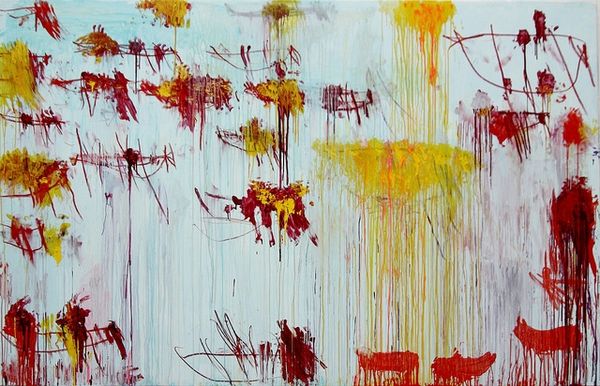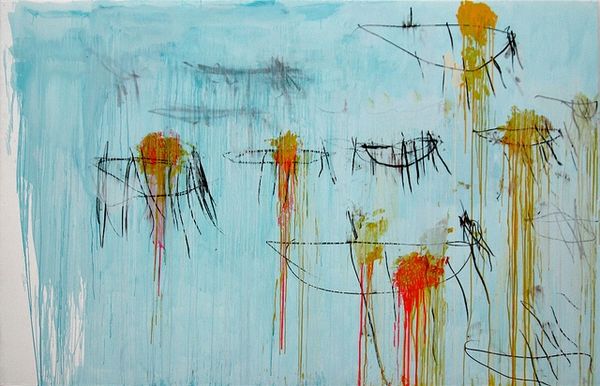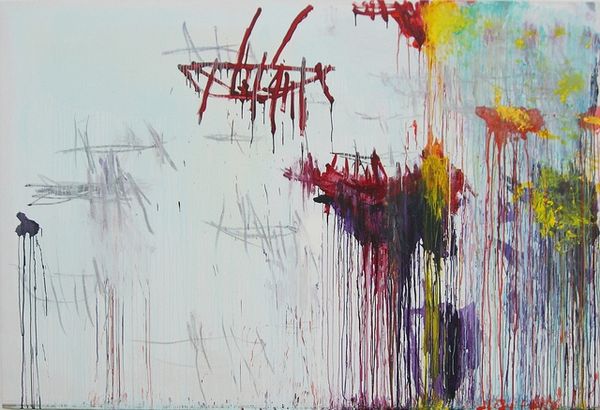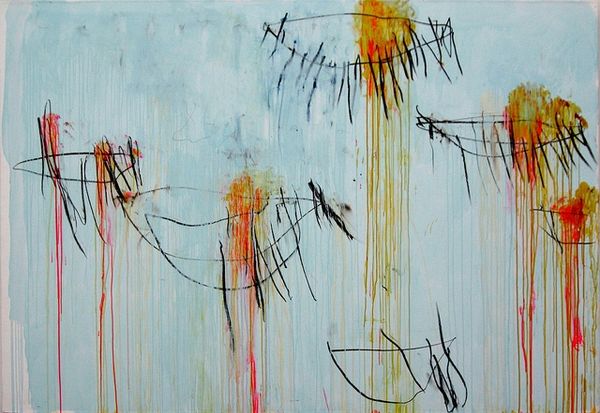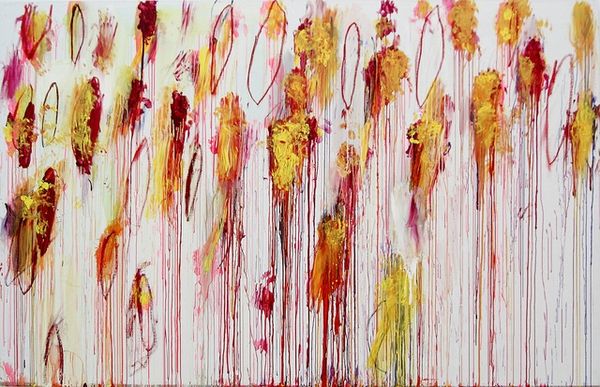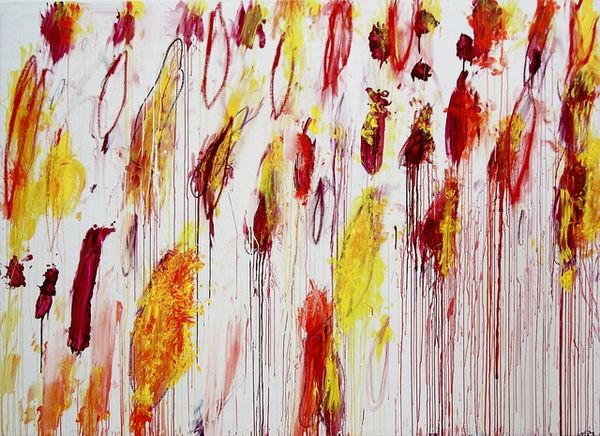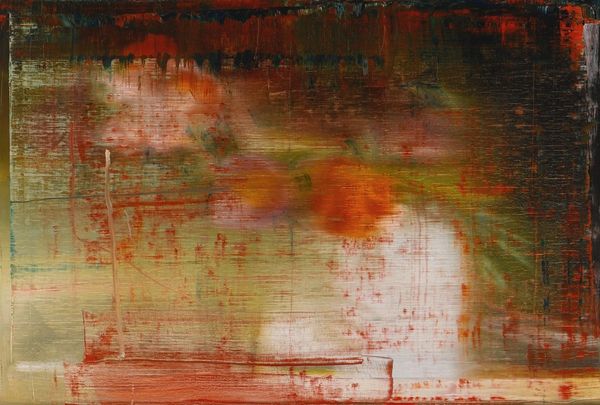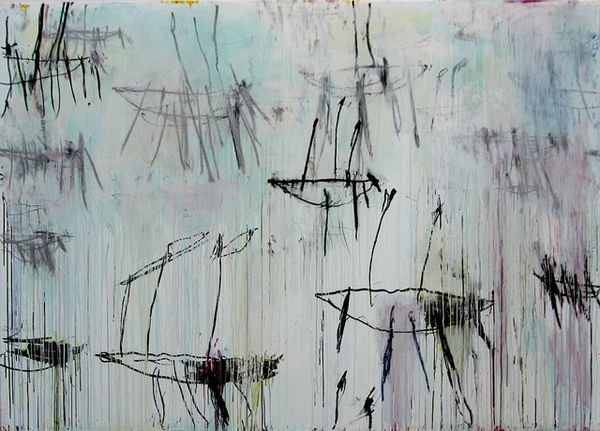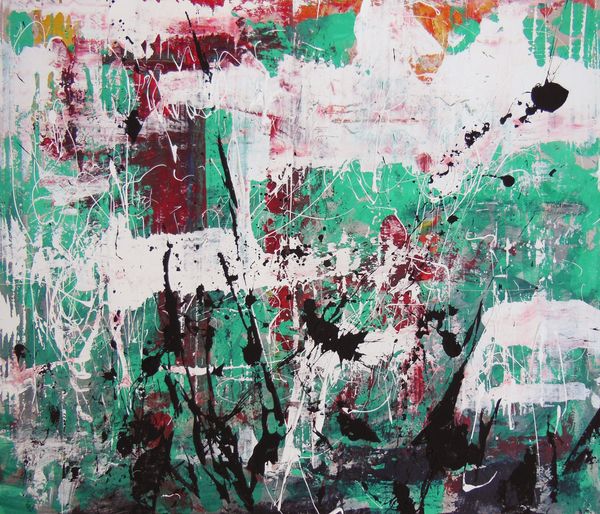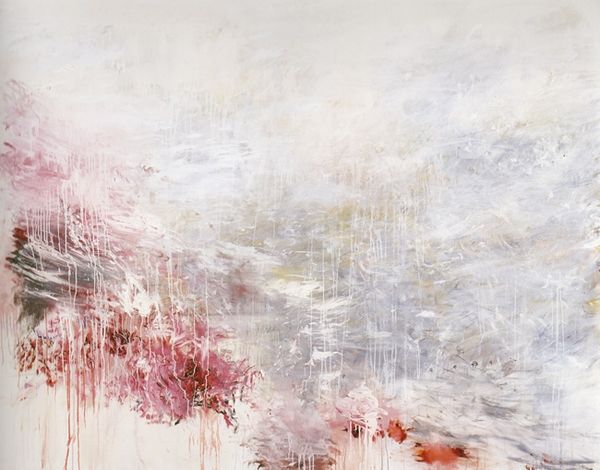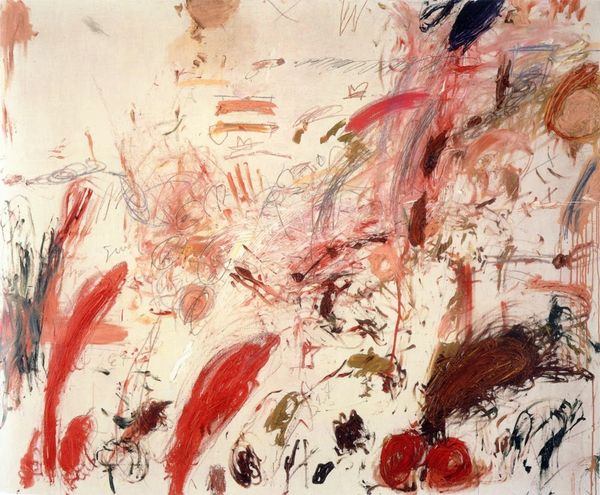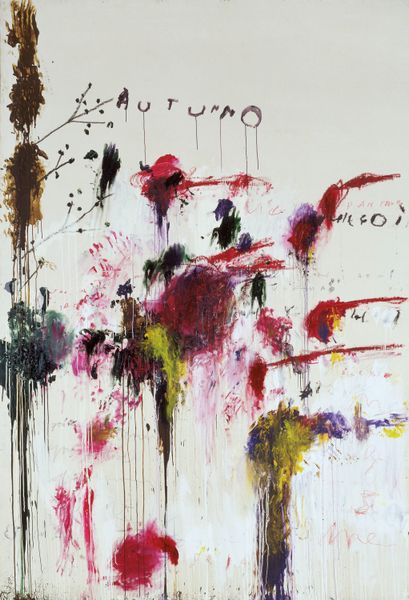
#
black-mountain-college
Dimensions: 215.3 x 335.3 cm
Copyright: Cy Twombly,Fair Use
Curator: Cy Twombly's "Lepanto, Part IX," created in 2001 using mixed media including acrylic paint, strikes me as raw, almost violently expressive. The dripping lines and crude boat-like shapes convey a sense of chaos and immediacy. What's your take on this piece? Editor: It unsettles me, to be honest. The repetition of those almost childlike renderings of boats, set against the stark white, evokes a haunting, historical echo of conflict. There's something inherently tragic about it, connecting the visual to the devastation wrought on both sides in that conflict, and to conflict, as such. Curator: Thinking about its material construction, the texture is crucial. The visible drips aren't just representational; they evidence the act of painting, the physical engagement of Twombly with the canvas and the properties of acrylic itself. It really pushes against the high/low art binary by showing the labour and medium itself as meaning-makers. Editor: And those lines and scratches! They’re loaded, historically. Reminiscent of Arte Povera and that postwar reckoning with grand narratives by emphasizing the raw, the unfinished, and the inherently unstable. This isn't just form; it speaks to the politics of representation and challenges whose stories are valorized in traditional art history. What constitutes art becomes part of a wider socio-political narrative. Curator: Absolutely. It questions artistic conventions by almost embracing imperfection and the unfinished process. Think of Arte Povera's own challenge to art's elitism through simple, even abject materials, in ways not unlike Twombly's gesture here, decades after the movement took shape. Editor: And the scale too, its monumentality makes you reflect upon the relationship of our embodied human self with what has often felt to be remote History. I agree. He's dismantling myth-making by exposing his method as something fallible and open, inviting viewers to witness not a flawless vision, but an act of critical interpretation. What remains poignant here is Twombly's reflection on the act of painting historical narratives that affect social justice issues to the modern day. Curator: In short, seeing "Lepanto, Part IX" this way, helps me see it as less about a specific historical sea battle and more about a potent reminder that art, at its most effective, forces us to reconsider not only how it's constructed but whose reality it represents.
Comments
No comments
Be the first to comment and join the conversation on the ultimate creative platform.
